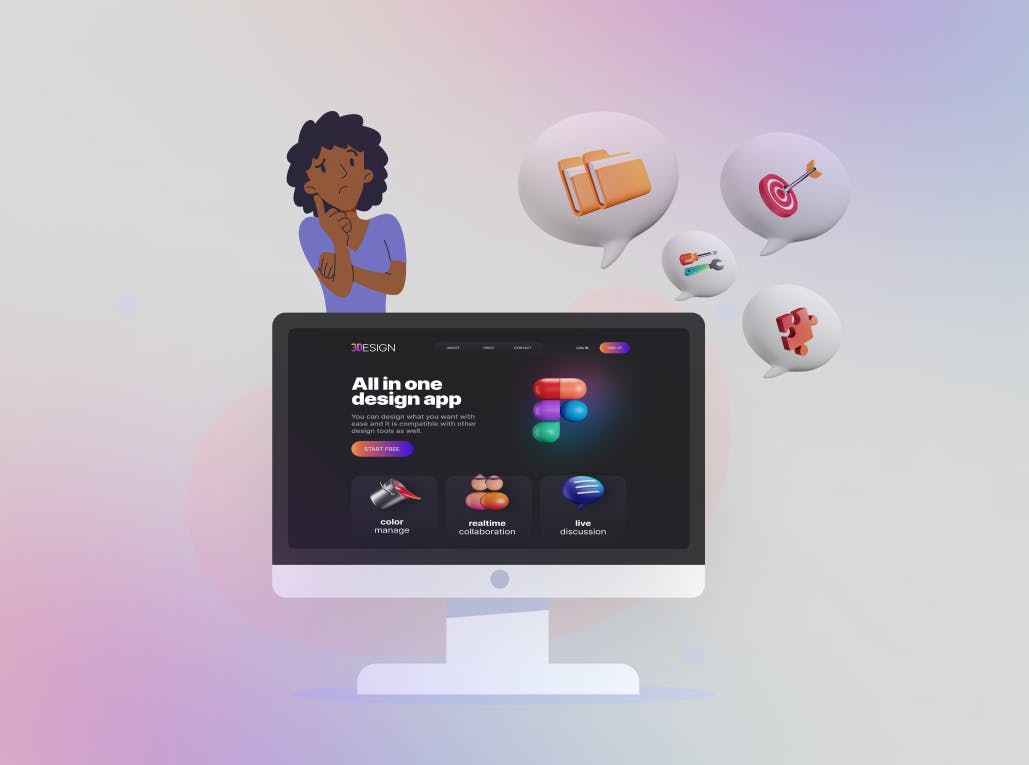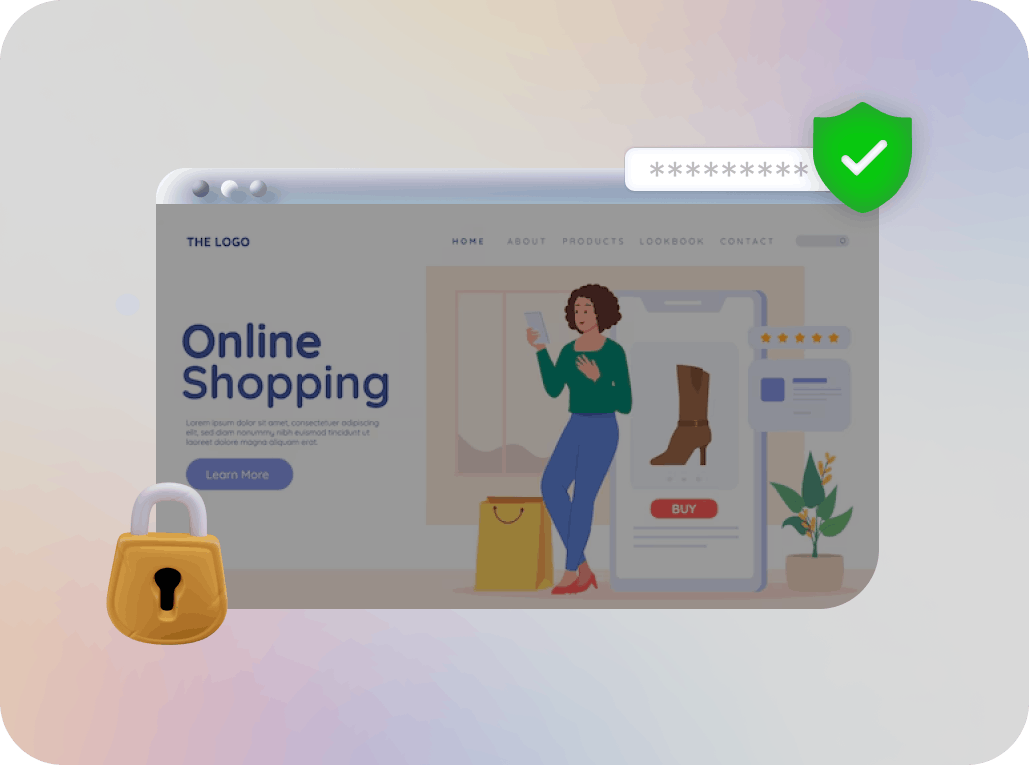If you’ve got a website, chances are you’ve heard of SEO. But if you’ve been thinking, what exactly is SEO? Why is it such a big deal? And do I really need SEO for my website? (the answer is YES btw) Today we’re bringing you those answers you’re looking for, along with 10 simple tips and tricks to improve your website’s SEO. Let’s dive right in!
What is SEO?

What is SEO
At this point you’ve probably realized that the internet is FULL of content. From blogs to newsletters, from small businesses to large enterprises, billions have carved out a piece of the web for themselves--and that includes hundreds of your competitors (unfortunately). When a place is so crowded, how do you get found?
That’s where SEO (Search Engine Optimization) comes in. Without it, your website is just a needle in a haystack. Think of SEO as a way to help search engines (like Google) understand what your website is about so they can show it to people looking for your kind of content.
How does it work?
When you type something into Google, let’s say, “best pizza near me” Google isn’t randomly picking websites to show you. It’s using a super smart process to decide which sites make the cut and in what order.
Here’s an over-simplified look at how it works:
- Crawling: Search engines use little bots called "crawlers" or "spiders" to scan the web. These crawlers move from site to site, reading all the pages and collecting information about them.
- Indexing: Once the crawlers gather that info, search engines organize it into something called an index. Think of the index as a giant library that stores all the pages the crawlers have found. If your site isn’t indexed, it won’t show up in search results.
- Ranking: Now here’s where SEO really kicks in. When someone searches for something, the search engine sifts through its index and ranks the pages based on several factors (this is called the algorithm). These factors include things like:
- How relevant your content is to the search term.
- How trustworthy or credible your site appears
- How well your site performs on mobile devices.
- How quickly your page loads.

How SEO works
The goal of SEO is to make your website as attractive as possible to these crawlers and algorithms, so search engines rank you higher. The higher you rank, the more likely people are to click on your site—because, let’s be honest, no one likes scrolling through 10 pages of results!
Now that we’ve established that you definitely do need SEO for your website, let’s look into the many ways of improving your website’s SEO.
1. Use keywords naturally in your content
When it comes to SEO, keywords are the main ingredient. But you need to know how to use the right way. Keywords are the words or phrases people type into search engines when they’re looking for something online. For example, if someone is looking to buy a cake in Colombo, they might search for “best bakery in Colombo” or “cakes in Colombo” These phrases are what we call keywords.

Using keywords
Your job is to figure out what keywords your potential customers are using and make sure those words appear naturally on your website. The goal is for search engines, like Google, to recognize your site as a relevant result when someone searches for those keywords.
To get started, you need to do a little keyword research. There are free tools, like Google Keyword Planner or Ubersuggest , that can help you find keywords related to your business. Here’s what you need to focus on:
- Relevance: Make sure the keywords are relevant to your products or services. If you own a bakery, keywords like “custom cakes” or “birthday cupcakes” would be a good fit.
- Search Volume: Look for keywords that people are actually searching for. It’s great to find a niche keyword, but if no one’s searching for it, it won’t help much.
- Local Keywords: For local businesses, it’s essential to include location-based keywords. For example, if you own a cafe in Galle, use keywords like “best coffee shop in Galle” or “cafes in down south Sri Lanka.” This helps search engines understand where your business is located and show your website to people searching in that area.
2. Focus on local SEO

Focus on local SEO
If you are a local business, your potential customers are most likely to be near the same geographical location as you. In that case, focusing on local SEO is the best way to go. Local SEO is all about making your website visible to people in your area. In addition to using local keywords, there are a few other things you can do to optimize for local SEO:
- Google My Business: Make sure your business is listed on Google My Business and fully optimized. This is a huge factor in getting found in local search results and on Google Maps.
- Local Listings: Add your business to local directories and review sites like Yelp, TripAdvisor, or niche-specific platforms.
By creating content that highlights your local presence and using local keywords, you’ll improve your chances of being found by people searching in your area.
3. Make sure your website is mobile friendly

Mobile friendly website
With so many people browsing on their phones, having a mobile-friendly website is crucial these days. Google prioritizes sites that are easy to use on a mobile device. If your site is difficult to navigate or looks funky on a small screen, you’re likely to lose visitors—and Google will notice that too! Now, if you’re wondering how to optimize your website for mobile (and some further info on why you definitely need to) click here because we’ve already got you covered!
And if you’re not sure about how your site performs on mobile, you can use a mobile-friendly-test tool to test your website’s mobile optimization.
4. Create high quality
Google loves consistent content. Which is why creating helpful content is one of the best things you can do for your SEO. The type of content you make will of course vary with your business context. But we recommend getting creative with it!
This could mean writing blog posts or FAQs that answer common customer questions, sharing tips related to your products, or posting updates about your business. You could also create a content-calendar to help keep you more consistent with your uploads.
More content means more engagement with your customers, and more opportunities to use your target keywords! (Pro tip! - If you’re a small, local business, writing content that relates to your community or area can help you connect with local searchers as well!)
5. Backlinks

Backlinks
Backlinks can sound a bit technical, but they’re actually pretty straightforward once you break it down. Think of backlinks as a sort of recommendation. When other websites link to your site, it’s like they’re vouching for you. The more trustworthy the site linking to yours, the better it looks to search engines like Google. Backlinks also brings you more visibility. The more quality backlinks you have, the more people are likely to visit your site, thereby generating referral traffic for you. When someone clicks on a link to your site from another website, it’s called referral traffic. For example, if you’re featured on a popular blog, the people reading that blog might click through to your site, bringing you new potential customers!
Now you might be thinking, how do I get good backlinks? Well.. it’s not something that happens overnight. But here are some of our suggestions.
- Create shareable content: Write blog posts, create infographics, or publish resources that others want to share or reference. The more helpful your content, the more likely people will link to it.
- Reach out to others: Don’t be afraid to ask other websites or blogs in your industry to link to you. Maybe you can collaborate or guest post on their site, which would also include a link back to your own.
- Get listed in directories: There are business directories or niche-specific directories that can help you get more backlinks. Just make sure they’re reputable, as bad-quality backlinks can hurt your SEO.
While backlinks help boost SEO, don’t worry if you’re just starting out. Focus on creating great content first, and the links will come!
6. Optimize your website speed

Optimize website speed
Let’s be real, nobody likes a slow website. Neither does Google! Potential customers might click away if your page takes too long to load, and this will end up hurting your rankings. The secret to a fast-loading website is a well-made website. Additionally, small tweaks like compressing the images you use, and using a good hosting provider can also go a long way when it comes to faster load times.
7. Use simple on-page SEO
On-page SEO is all about optimizing your individual web pages to be as search-engine-friendly as possible. Here’s how you can do it.
- Optimizing your title tags and meta descriptions.
You know that headline and the short summary that pops up about a webpage whenever you search something up on your browser? Yeah, that’s the title tag and the meta description. Google uses these to determine how relevant your content is to a user’s search. This is where you should utilize your relevant keywords. The length of your title and description matters too. It should be long enough to provide an accurate description including all the right keywords, but also short enough that it doesn’t get cut off at the end of the screen (You can also use online tools to help find the perfect length for your titles and descriptions). These two pieces of text are the very first impression a user has of your website. So make sure to make every letter count!
- Alt Text for Images
Alt text (or alternative text) is a simple description you add to your images. It helps search engines understand what your images are about since they can’t "see" images like humans do. Why does this matter? Because search engines will rank your page higher if they know what’s in the images! Plus, it helps with accessibility for people using screen readers.
For example, if you have a bakery business and want to add a picture of your chocolate cake, the alt text could be something like “Chocolate cake with fresh strawberries from [Your Bakery Name].” This way, both Google and users know what the image is.

Alt text for images
- Internal Linking
This is when you add links to other pages on your own website. It helps visitors easily navigate between your pages and encourages them to spend more time on your site. Plus, it shows search engines that your content is connected!
Going back to our bakery example, if you have a blog post about "How to Choose the Perfect Wedding Cake," you could link to your “Wedding Cakes” product page. It’s like giving visitors a helpful road map to explore more of your site.
- Headings (H1, H2, H3, etc.)
Headings aren't just about making your content look neat—they play a huge role in how search engines understand your page. Using the right heading sizes (like H1, H2, H3) helps search engines figure out what’s important on your page and how your content is organized. This can directly impact your SEO rankings.
Here’s how it works:
- H1 Tag: Think of the H1 tag as the title of a book. It’s the most important heading on your page because it tells both readers and search engines what the page is about. You should only have one H1 per page, and it should clearly include your main keyword.
- H2, H3, etc.: These are your subheadings, and they act like the chapter titles of a book. They help break up your content into sections, making it easier to read and scan. Search engines also use these subheadings to understand the hierarchy of your content. Your H2s should represent main sections, while H3s and lower levels can dive into more specific details. For instance, if your H2 is “Our Wedding Cake Flavours,” your H3s could be specific flavours like “Vanilla” or “Red Velvet.”
When search engines see well-structured headings, they can quickly identify what’s most important on the page, which helps them match your content to relevant searches. Using heading tags properly can also improve user experience—people (and search engines) love content that’s easy to skim, and headings do just that. Plus, if you’re using keywords naturally in your headings, you’re giving your SEO an extra boost. So make sure you pay attention to the hierarchy when coming up with your content for your site.
8. Encourage customer reviews

Customer reviews
Believe it or not, online reviews can boost your SEO! Google looks at reviews to see how trustworthy and popular your business is. Encourage happy customers to leave reviews on platforms like Google, and even Facebook. Just remember:
- Respond to reviews: Engage with your customers by responding to reviews—both good and bad. This shows that you’re active and care about your customer experience.
- Use review snippets: If you have great customer reviews, showcase them on your website. It adds social proof, which both customers and search engines love.
9. Get involved with social media
While social media doesn’t directly impact your SEO rankings, it can definitely help drive traffic to your website, and traffic is exactly what you need. The more people share and engage with your content, the more visibility you get. Set up profiles on platforms where your customers are, share your blog posts, products, or services, and encourage people to visit your website.
10. Track your progress
You don’t need to be a data expert to track your SEO progress. There are plenty of free tools like Google Analytics and Google Search Console that can help you see how your website is performing. You can track things like:
- How much traffic your site is getting.
- Which keywords are driving visitors to your site.
- How your pages are ranking on search results.
By checking in regularly, you can see what’s working and adjust your strategy as needed.
And that’s it folks! Mastering SEO doesn’t have to be as scary as it may sound like. All you need is some simple tips and tricks (and the help of some free online tools) to get you going, and you’ll be generating more traffic in no time. Good luck!


